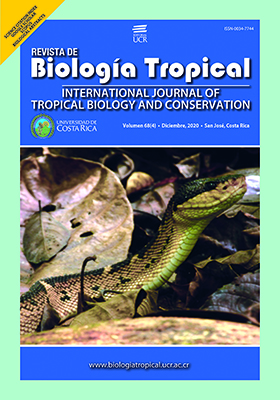Abstract
Introduction: Ornamental Angel fish (Pterophyllum scalare) is one of the main commercialized species from South America, with an important number of national and international dealers. Objective: To make a histological and morphometric description of P. scalare digestive tract. Methods: Nineteen adult individuals were used. Intestinal coefficient values were obtained, and a macroscopic and microscopic description of esophagus, stomach, and intestine (anterior, middle and posterior) was carried out. Samples were processed for paraffin embedding, and 5 µm sections were stained with H&E and P.A.S. Positive P.A.S. cells were counted. Lumen area and tissue area were measured in representative digitalized sections from each region. Results: P. scalare exhibited a short esophagus, followed by a blind bag shaped, scarcely muscular stomach, and a short intestine (intestinal coefficient 1.66 +/- 0.52). Four constitutive tissue layers were identified: mucosa, submucosa, muscular and in some areas also a serosa layer. Esophagus exhibit abundant globet P.A.S. + cells and shows the larger tisular area was observed. Luminal area and perimeter are larger in anterior intestinal region. Conclusions: the intestinal coefficient value (1.66 +/- 0.52), and the histological and morphometric characteristics of the evaluated organs, suggest that P. scalare is omnivorous with soft prey preferences.
##plugins.facebook.comentarios##

This work is licensed under a Creative Commons Attribution 4.0 International License.
Copyright (c) 2020 Edith Juliana Ramírez Espitia, Hernán Hurtado Giraldo, Edwin Gómez Ramírez



